First Female Lighthouse Keeper in Florida
A lighthouse is a tower that emits a flashing beam of light from a system of lamps and lenses. They mark dangerous coastlines, shoals, or reefs, and guide pilots at sea into safe harbors. In the 19th century, they were vital lifelines to maintaining safety at sea.
Image: St. Augustine Lighthouse, home of Maria Mestre de los Dolores Andreu
Built in 1700; aided mariners for 162 years.
Image shows the various stages of the lighthouse structure.
Photograph courtesy National Archives
Backstory
Don Juan Ponce de Leon discovered La Florida, the Land of Flowers, in 1513. Approximately fifty years later, Spain attempted to colonize Florida by dispatching Don Pedro Menendez de Aviles to the area. Menendez arrived off the Florida coast in 1565 and established the fledgling colony of St. Augustine, the oldest permanent European settlement in North America. Near St. Augustine, the Matanzas River flows past barrier islands named Anastasia and Conch and empties into the Atlantic Ocean.
Early on, the Spanish constructed a wooden lookout tower on the northern end of Anastasia Island, overlooking the inlet that leads to St. Augustine and other structures followed. Spain ceded control of Florida to the English in 1763, in exchange for control of Cuba. However, the 1783 Treaty of Paris returned control of Florida to the Spanish, who controlled Florida until 1821 when they relinquished it to the United States, who built many lighthouses along the eastern coast of the state.
Keepers of the Light
Only by maintaining a flashing light along the coastline to mark harbors and hazards were mariners able to manage treacherous seas along shorelines. In the 19th century, the lighthouse keeper was also the first person sailors turned to for help in an emergency; therefore maintenance of a light was vital to the country while the most efficient shipping method was by water.
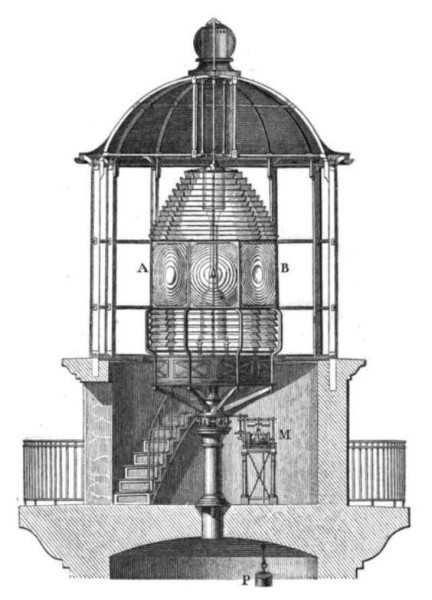
Image: Lighthouse Lantern Room from mid-1800s
Cutaway drawing of a lighthouse lantern room from mid 1800s showing the Fresnel lens. The cylindrical lens with 8 faces stood 10 feet high. A clockwork mechanism, driven by weight, slowly turns the entire lamp-lens assembly on six rollers. This system, invented by Augustin-Jean Fresnel, scans the 8 beams from the lens around the whole horizon. The resulting regularly flashing light seen by mariners served to distinguish the lighthouse from stars or shore lights.
As St. Augustine was the leading port in their newly acquired territory, the U.S. government appropriated $5,000 to convert the old Spanish tower into a lighthouse with a height of about thirty feet. It was placed in service in 1824, three years after Florida became a U.S. Territory. In the early 19th century, the responsibilities of manning a lighthouse were so important that only the president of the United States could appoint and dismiss keepers, who were usually men.
Juan Andreu was the first Hispanic-American to serve in the Coast Guard, which had been founded in 1790, and the first official keeper of the St. Augustine Lighthouse. Juan was born in Florida to parents who had come from Minorca, an island off the eastern coast of Spain. The government paid Andreu $350 a year to care for the lighthouse, including the ten oil lamps that were set in silver reflectors.
Isaiah William Penn Lewis, engineer to the U.S. Lighthouse Survey and a lighthouse designer and builder stated:
The best keepers are found to be old sailors, who are accustomed to watch at night, who are more likely to turn out in [bad weather] and find their way to the lighthouse to trim their lamps, because in such weather, they know by experience the value of a light, while on similar occasions the landsman keeper would be apt to consider such weather as the best excuse for remaining snug in bed.
In the 1850s, the annual salary of a lighthouse keeper was $400. While supplies for the maintenance of the St. Augustine lighthouse were sent by the government, food and supplies for the family were not. So not only did keepers have to ensure the light was continuously lit throughout the night, they fished, hunted, and grew a vegetable garden on the premises. And any children living on the property had to be cared for and educated.
Joseph Andreu, son of Juan Andreu, became St. Augustine keeper in 1854. That same year, the lighthouse was outfitted with a revolving Fresnel lens, and the height of the tower was increased to more than fifty feet. For Joseph, his wife Maria Mestre de los Dolores Andreu served as back up lighthouse keeper, helped with the garden, and raised their children.
Reaching out to lost sailors became a part of the service’s daily responsibilities. U.S. Secretary of the Treasury Levi Woodbury said:
Civility should be enjoined as a duty to strangers wishing to examine the Lights, and, in case of shipwrecks near, every practical effort required to be made to render reasonable and efficient relief, and all due vigilance exercised to detect and expose every breech of the revenue laws in his neighborhood.
First Woman Lighthouse Keeper in Florida
In December 1859, Joseph Andreu was white-washing the lighthouse tower when the scaffolding he was standing on broke and Joseph fell sixty feet to his death. His death greatly alarmed the community, and the town of St. Augustine quickly rallied around Maria, realizing that she was the most knowledgeable person to maintain the lighthouse.
The government appointed Maria Mestre de los Dolores Andreu keeper of the St. Augustine Lighthouse. At age 58, Maria Mestre de los Dolores Andreu became the first woman to serve as an official lighthouse keeper in Florida and the first Hispanic-American woman to operate a federal shore installation.
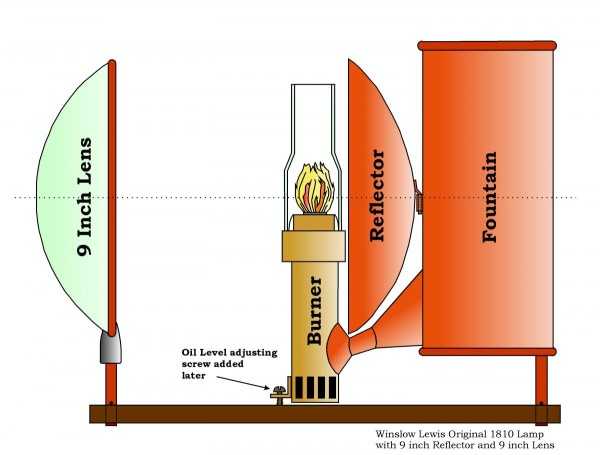
Image: Winslow Lewis Lamp, 9 inch Reflector and 9 inch Lens
The Lantern Rooms were so small that the keepers had great difficulty walking between the chandelier and the outside windows.
The Andreus were among the first in the long history of Hispanic-Americans serving in the U.S. Coast Guard. Maria stood watch at the St. Augustine lighthouse for three years. In 1862, while the Civil War was raging, Confederate forces extinguished the light at St. Augustine so it could not be used by the Union Navy. Confederate soldier Joseph Pacetti was wounded as he removed the Fresnel lens from the lighthouse. Maria Andreu’s job was over; she moved away from the lighthouse but remained in the area.
Andreu’s Legacy
Maria Mestre de los Dolores Andreu may have been the first female Coast Guard employee, and Hispanic-American women continued to make a significant impact in the Coast Guard. In 1991, Marilyn Melendez Dykman became the first Hispanic-American female Coast Guard aviator. Today, Hispanic-Americans serving in the Coast Guard make up about 11 percent of the service. Retired Lt. Cmdr. Dykman said:
Maria Andreu’s leadership and perseverance as keeper of the lighthouse inspired generations of women to shine as female employees within federal service through her beacon of light. Andreu opened the doors for women in the Coast Guard like myself and will carry over throughout many generations to come.
SOURCES
Lighthouse: St. Augustine, Florida
Coast Guard Compass: Sentinel of the Light
How a Hispanic Woman made Florida History at the St. Augustine Lighthouse
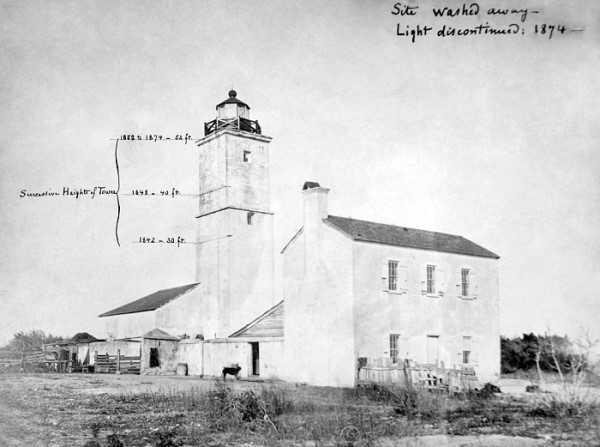
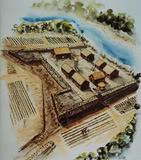
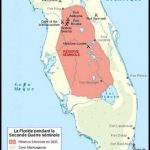

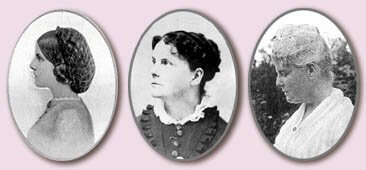
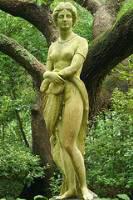

I absolutely love this history of the lighthouse keepers in our town! This history of the First Lady lightkeeper appeared at a very apropo time; Women’s Week!
It is great to see Maria so honored. Her name is St. Augustine “Mestre” is now Masters, She was recognized as by the USCG as the first Hispanic keeper…the detail is that the Mestre and Andreus were both of Minorcan desent. Minorcan is a name used locally to describe a hardworking and maritime culture/diaspora that came here to during the American Revolution (British Period 1763-1783) from New Smyrna Beach, FL after being recruited by a Scottish Physician, Andrew Turnbull to be indentured servants on an indigo plantation there. The group walked the 60 miles for refuges from terrible conditions. And, as a group the heritage is Mediterranean. They cae from Minorca, Minorca, Spain and Italy as well as other locations.
Juan came to St. Augustine as a baby in his mother’s arms having been born in New Smryna Beach in 1771. His father was a ship’s carpenter and before he was a lighthouse keeper, he was harbor pilot. He was appointed because he knew the shallow and ever changing port of St. Augustine well. Joseph was his cousin, not his son.
I have never seen a record of Pacetti being wounded, or being involved in the removal of the lens. Would love to see that source materials. The Pacetti’s are also Menorcan, but the actual removal of the lens was by a hired worker. Paul Arnau, who was harbor master was involved. He later became mayor.
It is believed that Maria moved to Georgia, which a few women did, when they refused to sign the Union oath of Allegiance. However, many Masters remain in the area today.
Juan Andreu, Joseph’s father (Kathy Fleming above says cousin) and Maria’s father-in-law is my direct ancestor. Only recently I discovered that he was the first St Augustine lighthouse keeper. This was news to the rest of my family.
That Maria Mestre de los Delores had been Lighthouse Keeper I learned today. It’s a thrilling discovery!